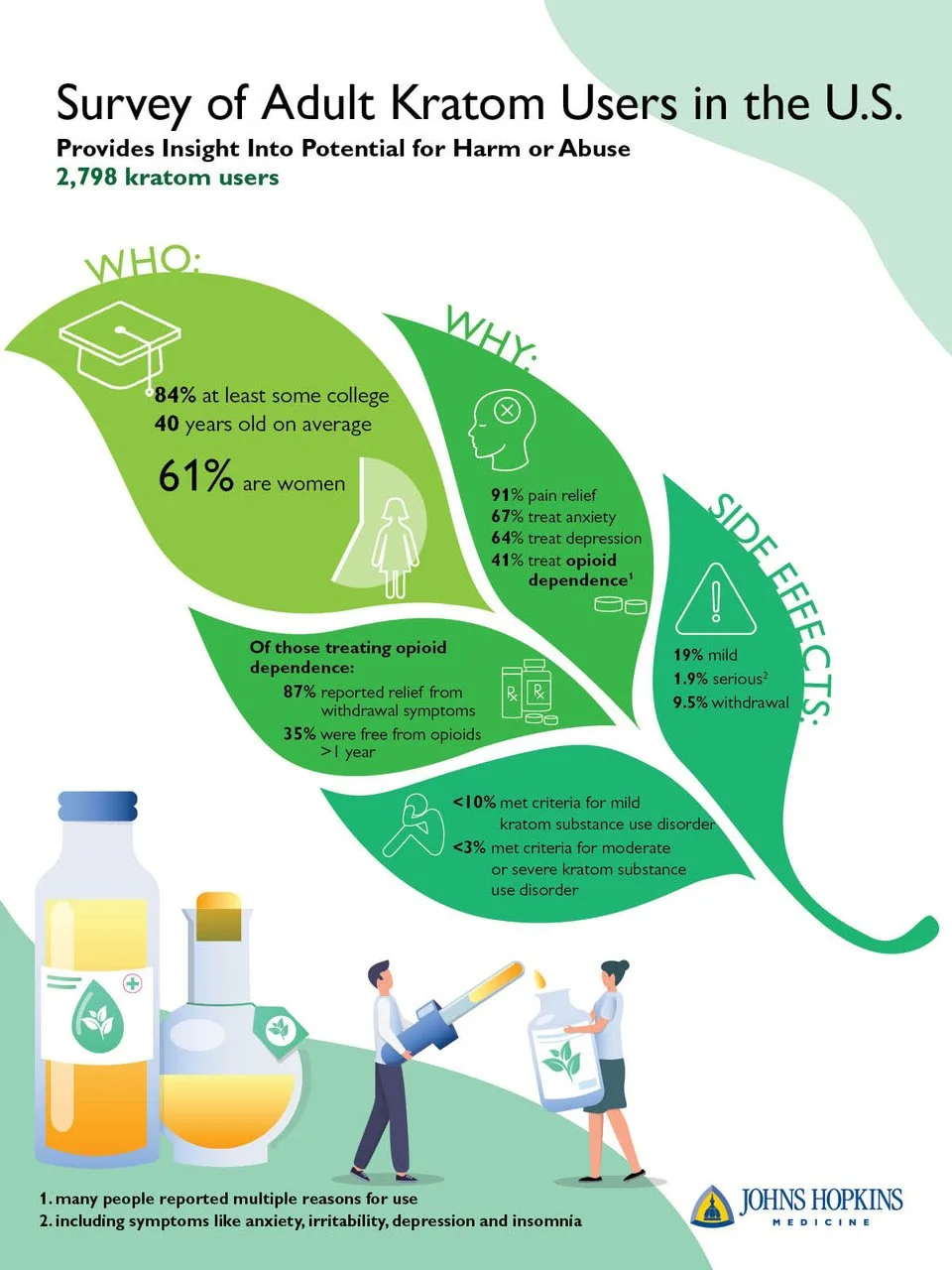Leading Edge Kratom Science
Addressing Abuse Potential, Safety, Patterns of Use, Reasons for Use, and New Studies of Mitragynine, 7- hydroxymitragynine, and Other Kratom Alkaloids
An annotated update of the 2018 published review article:
The Abuse Potential of Kratom According to the 8 Factors of the Controlled Substances Act:
Implications for Regulation and Research
By
Jack Henningfield, Reginald Fant & Daniel Wang
This report was developed by
Dr. Jack Henningfield and colleagues at PinneyAssociates
For the American Kratom Association to inform and update policy makers, health and regulatory officials, and public health and medical experts on kratom safety and abuse potential
August 6, 2021
Acknowledgement and disclosure. This update of the Henningfield et al. 2018 kratom abuse potential assessment review is required to account for the significant number of new research studies that have been completed that collectively adds to the body of scientific evidence about the kratom plant and its constituent alkaloids. The American Kratom Association (AKA) and its affiliate, the Center for Plant Science and Health that funds new research into kratom, have supported an independent assessment of the current research landscape. This update followed a request for partial support of the time and effort for Dr. Henningfield and his colleagues at PinneyAssociates to develop the report. The purpose was to provide a state-of-the-art report to inform policy makers, health and regulatory officials, and public health and medical experts on kratom safety and abuse potential. AKA did not contribute to or influence the conclusions of Dr. Henningfield and colleagues at PinneyAssociates.
Through PinneyAssociates, Dr. Henningfield and his colleagues provide scientific and regulatory consulting to support new drug applications (NDAs) and risk management programs for a broad range of CNS active substances and drug products including psychedelic substances, new chemical entities, and alternative formulations and routes of delivery, as well as dietary ingredient notifications, cannabinoid assessment, and noncombustible tobacco/nicotine products for FDA regulation.
PinneyAssociates scientific experts who contributed to this report include: Rachel Beck, PhD; August Buchhalter, PhD; Yolanda Green; Marilyn Huestis, PhD, HonD; Mark Sembower, MS; and Daniel Wang.
We also acknowledge the thinking embodied in this document by our former colleague and co-author of the 2016 kratom Abuse Potential Assessment submitted to the DEA and FDA and its updated published version in 2018. Dr. Fant died in September 2020, and we miss him dearly. See more about our team and Dr. Fant at www.pinneyassociates.com.
Kratom Science Update
Preface and Main Findings
Background: The 2018 Henningfield, Fant & Wang kratom abuse potential assessment was based on a 2016 assessment developed by Dr. Henningfield and colleagues at PinneyAssociates to inform the United States (US) Drug Enforcement Administration (DEA) and Food and Drug Administration (FDA) in their assessment as to the most appropriate regulatory approach to kratom and whether listing kratom (specifically, its alkaloids mitragynine [MG] and 7-hydroxymitragynine [7-OH-MG]) in Schedule I of the Controlled Substances Act (CSA) was warranted and in the interests of public health.
In brief, we concluded there was no evidence of an imminent threat to public health (a requirement for temporary or emergency scheduling) and that kratom was not like opioids in its safety and addiction risks. Furthermore, there was evidence that millions of people were using kratom for reasons associated with health and well-being, including in place of opioids they had been using for pain and/or addiction, and that thousands of people would be at risk of relapse to opioids and overdose if sale of kratom were banned and possession considered a narcotic criminal offense. We also concluded that banning kratom would foreseeably lead to the emergence of a deadly illicit market that would worsen what appeared to be the main problems with kratom, namely contaminated, adulterated, and inappropriately marketed products. We concluded that these problems could be addressed by continuing to allow legal sale of kratom but with FDA oversight providing standards for product quality, labeling, and other issues that FDA routinely addresses.
Overview of main findings: This update reaffirms all of the conclusions of the 2018 report. The more than 100 new peer-reviewed published studies by researchers worldwide and many laboratory studies in the US with funding from the National Institute on Drug Abuse (NIDA), sustain those earlier findings. These studies provide a much fuller characterization of how kratom works and how it provides the benefits that many people report as their reason for use, but without narcotic-like addiction and overdose risks. The studies include the state-of-the-art types of animal abuse and physical dependence/withdrawal studies that FDA requires for new medicines and which DEA relies on for drug scheduling decisions. New clinical studies in humans provide initial assessments of kratom’s physiological health and safety related effects on liver, kidney, and cardiovascular function, as well as brain function, using magnetic resonance imaging techniques.
Conclusions based on new studies since January 1, 2018
Since the Henningfield, Fant & Wang (2018) 8-FA, there have been over 100 new published scientific studies, reviews, and commentaries by leading kratom experts, and an accelerating research pipeline funded in part by the US National Institutes of Health (NIH), National Institute on Drug Abuse (NIDA). These studies provide an increasingly strong evidence base for regulation and policy.
Nature got it right. There is a convergence of studies showing that the main natural constituent of kratom that accounts for the reasons people use kratom is MG, which carries relatively low abuse and health risks (See below). 7-OH-MG naturally occurs at





